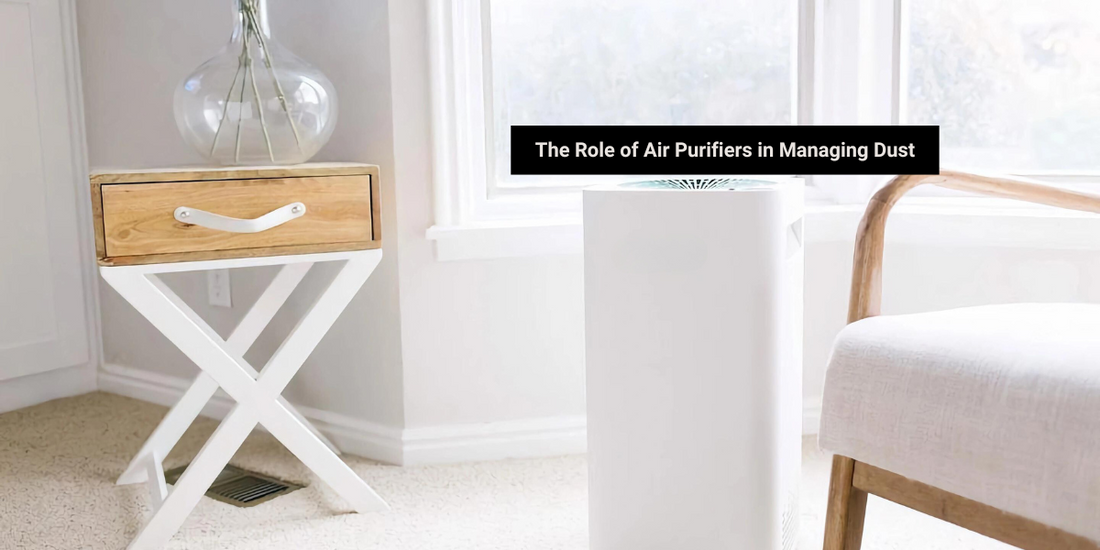Dust is a common nuisance in many households, and its presence can lead to respiratory issues, allergies, and discomfort. Air purifiers are designed to improve indoor air quality by reducing airborne particles, including dust. This article explores how air purifiers can effectively help manage dust, promoting a cleaner and healthier living environment .
Part 1: Understanding Dust and its Composition
Before discussing how air purifiers can tackle dust, it's important to understand what dust is and what it consists of. Dust is a combination of various particles, including dead skin cells, pollen, pet dander, fibers, dirt, and microscopic debris. These particles can easily become airborne and circulate within indoor spaces.
Part 2: How Air Purifiers Reduce Dust
Air purifiers can play a significant role in managing dust by employing the following mechanisms:
1. High-Efficiency Particulate Air (HEPA) Filtration
Air purifiers equipped with HEPA filters are highly effective at capturing and trapping small particles, including dust. HEPA filters are designed to remove 99.97% of particles as small as 0.3 microns. As air passes through the purifier, the HEPA filter captures dust particles, preventing them from re-entering the indoor air.
2. Pre-Filters
Many air purifiers feature pre-filters that capture larger particles such as dust, pet hair, and lint. These pre-filters act as the initial line of defense, preventing large dust particles from reaching the main filter. Regularly cleaning or replacing pre-filters is necessary to maintain their effectiveness.
3. Activated Carbon Filters
Some air purifiers employ activated carbon filters alongside HEPA filters. Activated carbon has adsorptive properties that can trap and remove odors, chemicals, and volatile organic compounds (VOCs) often associated with dust particles. By neutralizing these odors and chemicals, air purifiers with activated carbon filters contribute to a fresher and cleaner indoor environment.
4. Air Circulation and Ventilation
Air purifiers enhance air circulation and ventilation within a space. By constantly drawing in air and filtering out dust particles, they help prevent the accumulation of dust on surfaces, reducing the need for frequent dusting.
Part 3: Optimizing Dust Reduction with Air Purifiers
To maximize the effectiveness of air purifiers in reducing dust, consider the following tips:
-
Proper Placement: Position the air purifier in the room where dust is most prevalent, such as living rooms or bedrooms. Ensure that there is ample space around the purifier for proper air intake and circulation.
-
Regular Maintenance: Clean or replace filters as recommended by the manufacturer to maintain optimal performance. This ensures that the air purifier can efficiently capture and remove dust particles.
-
Consistent Operation: Run the air purifier continuously or for extended periods, especially in areas prone to dust accumulation. This helps maintain cleaner air quality and reduces dust buildup.
-
Comprehensive Cleaning: While air purifiers are effective in reducing airborne dust particles, it is important to complement their use with regular cleaning practices such as dusting surfaces, vacuuming, and maintaining clean bedding and upholstery.
Conclusion
Air purifiers, particularly those equipped with HEPA filters, can be highly effective in managing dust particles in indoor spaces. By capturing and trapping dust particles, air purifiers contribute to cleaner air quality and reduce potential respiratory issues and allergies associated with dust. Incorporating regular maintenance and comprehensive cleaning practices alongside air purifier usage can help maintain a healthier and dust-reduced living environment.

